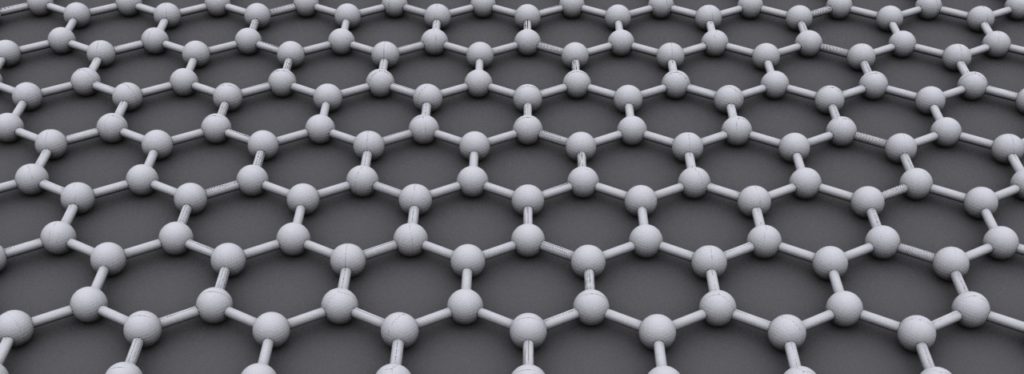
Hexagons Are The Bestagons: Graphene Edition
The other day @blackout introduced our family to “Hexagons Are The Bestigons”, a truly nerdy homage to an astounding polygon that is — as a piece of geek-art — work of extraordinary poetic magnitude. Before I say more, you should see it for yourself. If you’ve seen it before, you know you want to see it again:
As CGP Gray points out, one of the most powerful properties of hexagons is their ability to for a particular tessellation. Tessellation can also be called “tiling” — as if you were laying tiles of the shape on a flat surface like a floor — it’s an arrangement of regular geometric shapes that totally cover a surface with no spaces between their corners or edges.
It’s the specific pattern of tessellation that allows hexagons to be extremely useful in nature and technology. A great example of this is the material graphene — a one atom thick layer of carbon atoms arranged as a hexagonal tessellation. Behold the power of hexagons for conducting electricity:
READ: Can graphene-based conductors compete with copper in electrical conductivity?
Did you know?
There’s a “making of…” video for Bestagons?
That’s not the only thing the hexagons in graphene can do. Take a look at some of the possible applications:
Think About This:
- Graphene has so many applications as a “futuristic material”. What kind of innovations can you imagine based on graphene? Could we incorporate these ideas into the story of our SciFi SparkQuest Universe? Write your ideas in the comments.
- Graphene’s properties come from the four electrons in carbon’s outer shell. Three of these electrons form covalent bonds with neighboring carbon atoms, forming the lattice. This is what gives graphene its extraordinary strength at such a low density. The fourth electron does not bond, but “hangs out”, ready for different interactions. This is what gives graphene its transparency and conductivity (see diagram below | watch an advanced video of a real scientist explaining this). Let’s do a little research about What are covalent bonds and why they are so strong? and also on What are electrons’ role in the conduction of light, electricity, and heat?
Research Ideas?
Small Items: Post in the comments section.
Large Items: Create a post and link to in the comments section.
Suggested Keywords:
covalent bond, definition, strength, energy electrons, covalent vs ionic bonds
electrons, conduction, heat, light, electricity, conductivity, thermal, electrical, optical, transparency




I love this stuff it’s really cool and I think that graphene is a super building material that will dominate the future.
Covalent bonds happen when 2 or more atoms share electrons and become well connected and won’t break except under extreme pressure it conducts energy well but I didn’t understand that very well.
Look at the blue-and-purple diagram above. It’s my understanding that the purple electron orbit sticking up and down above the plane of the graphine latice is what conducts electricity and thermal energy. Remember when we looked up transparent materials and discovered that they have electrons available to absorb and emit a photon so they conduct light through them? The same idea hear. Those free electrons sticking up above and below can pass electrons and photons along, making graphine a good conductor.
Graphene is super material it can do almost anything and can be made into armor, planes, cars, fiber optics, so many options.